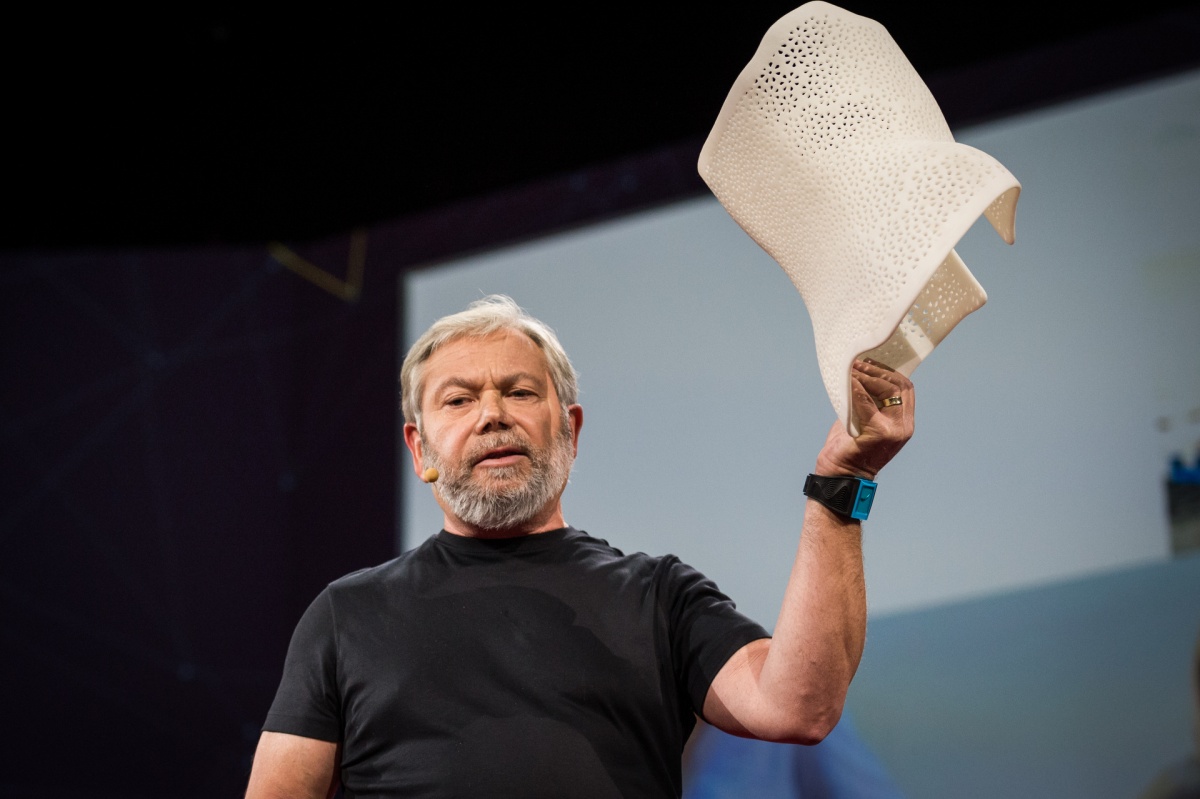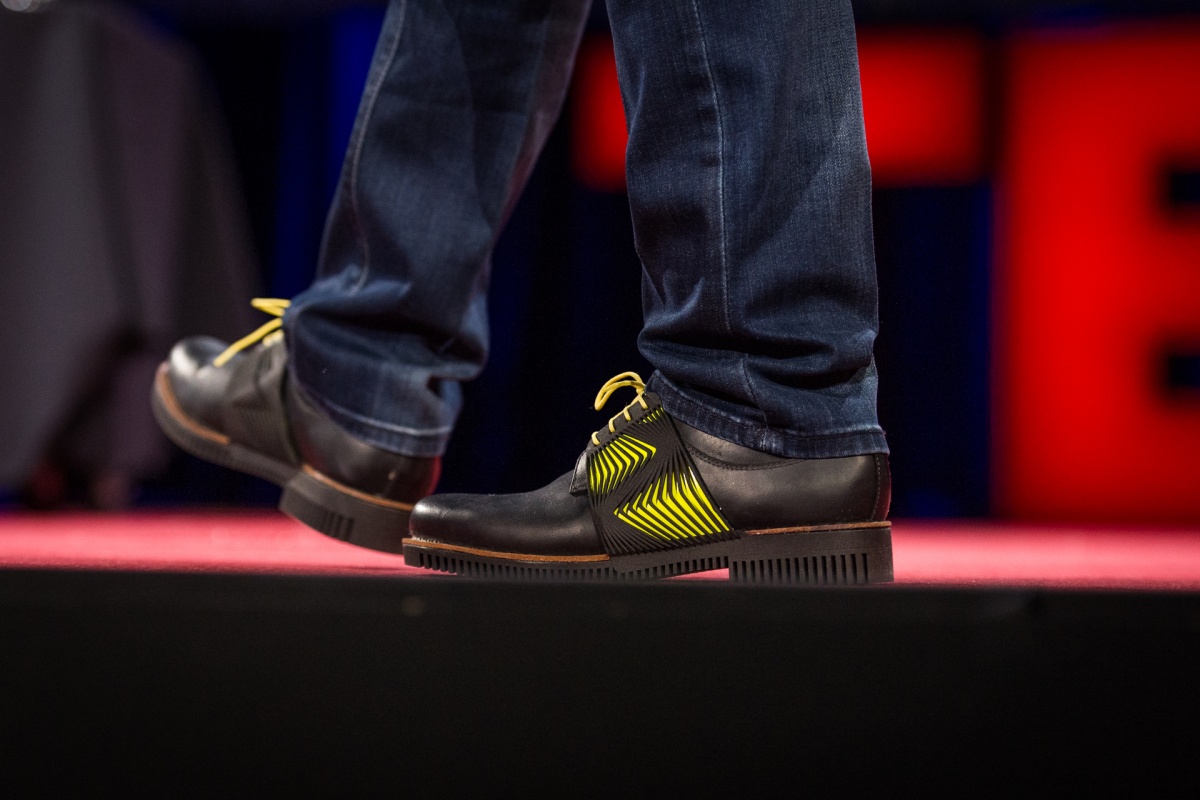 Avi Reichental, President and CEO of 3D Systems, spoke at TED 2014 in Vancouver and shared his insight on how 3D printing is returning us to a hyper-local economy powered by digital craftsmanship.
Avi Reichental, President and CEO of 3D Systems, spoke at TED 2014 in Vancouver and shared his insight on how 3D printing is returning us to a hyper-local economy powered by digital craftsmanship.
As he prepared for his talk, Avi was struck by the realization that although he is a present day digital craftsman empowered by 3D printing, the history of his and his family’s craftsmanship extends through generations to his grandfather, who earned his living as a cobbler. Upon making this connection, Avi knew there was only one way to deliver his TED talk: wearing 3D-printed shoes to honor the memory of his grandfather, who perished in the Holocaust.
The catch was that Avi only had two weeks until his talk to create the shoes.
So how did Avi and his team manage to build the world’s first hybrid leather and 3D-printed shoe in such a short period? The answer lies in leveraging the workflow advantages that 3D printing affords all manufacturers: digital scanning, global design collaboration and hyper-local manufacturing.
Two Weeks from Design to Fit
In design terms, the primary challenge was how to seamlessly fuse the new with the old and stitch together classic Italian leather with 3D-printed elements to deliver an authentic and stylish street-ready shoe.
Step one was to 3D scan an existing shoe and create a 3D template from which the team could design an insole, outsole, upper and wrap-around lace. To create a canvas from which the 3D work could shine, we chose a classic Italian leather design.
A group of 3D Systems’ designers then worked on the 3D-printed outsole and intricate geometric lace pattern. The 3DS team started with the 3D scan data of the template, which they acquired using the handheld Sense 3D scanner. This gave them the shape they needed to build a solid model from which to design the 3D-printed sole.
“The sole is very technical,” said 3DS Designer, Julien Rouillac. “It has to bend and flex. We began by looking at our own shoes and then found a way to push the design while still keeping it simple.” The 3DS designers created several options for both the sole and panels that wrapped up and around the leather upper.

To give the sole its necessary strength, the designers opted to use Selective Laser Sintering (SLS), which produces highly durable parts. Because the material is not flexible enough for the natural bending of one’s foot, the designers extruded slots from the solid sole to create a series of living hinges with parallel fins across the width of the shoe. Each fin connected to a membrane that formed the top of the sole, giving Avi’s strides comfort and fluidity.
All in all, the design phase took three days in which the designers created five different styles. From here, the team had a week and half to go, so the designers fast-tracked their files to 3D Systems’ on-demand printing service Quickparts. A mere two days later, the Quickparts team had printed the designs and express shipped them for assembly with the chosen leather uppers.
This is when the magic happened.
Just days before Avi’s talk, the shoes were assembled in New York with tools and materials from a local shoe repair shop using techniques that would have been familiar to Avi’s grandfather. A cushioning material, ethylene-vinyl acetate (EVA), was cemented to the sole, along with a strip of leather to act as an interface between sole and upper, known in the shoe world as a storm welt.
Next, the sole was joined to the upper and secured with four flathead screws in the shoe’s heel. After a little detail work, sanding and trimming, Avi’s shoes were ready.
The shoes were then overnighted to Vancouver, and not a moment too soon. Avi received them the morning of his talk, and laced up the first-ever hybrid leather and 3D-printed shoes with just 30 minutes to go before show time.
Avi’s shoes are a walking reminder of how 3D printing can connect us with our heritage and allow us to rediscover our craftsmanship skills. How will you honor the past by manufacturing the future?
Photos by James Duncan Davidson.